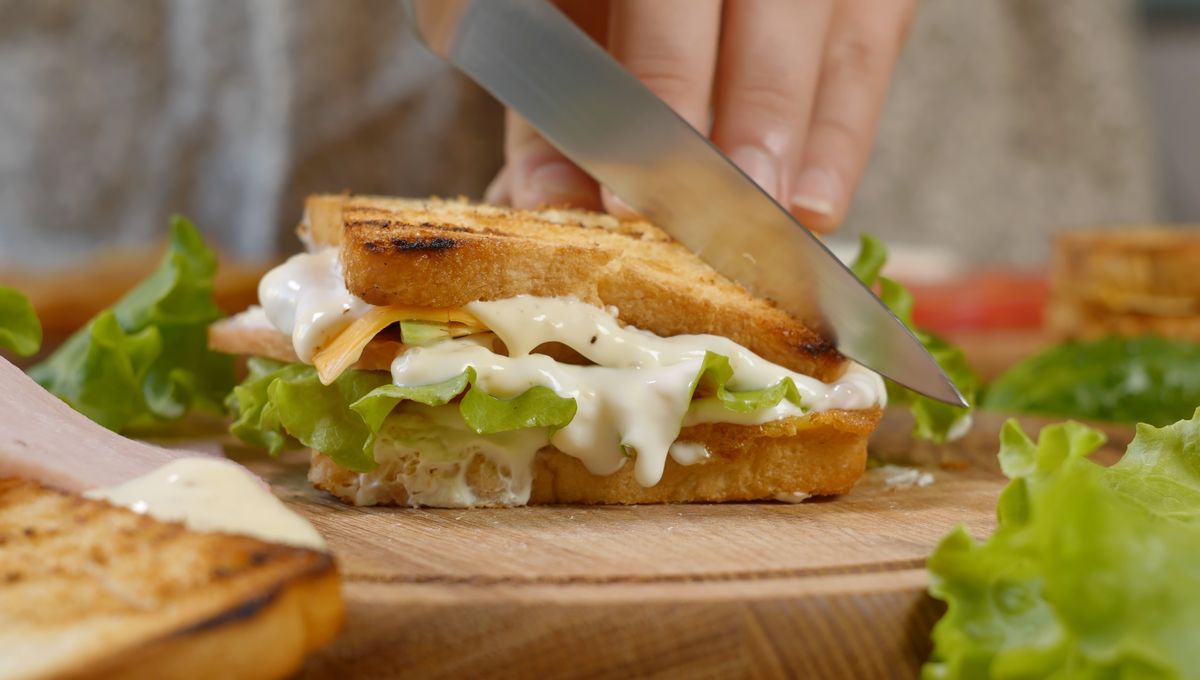
If there’s one thing that the internet has made clear, it’s that scientists should not be allowed anywhere near your food. They’ll snip the middle out of your birthday cake; divide your pizza into weird, curvilinear tessellations – and now, they’re coming after your sandwiches.
Now, we all have a favored way to slice a sarny: there’s the diagonal cut, which results in a pair of delicious triangles; the horizontal cut if you’re in more of a rectangular kind of mood; if you’re really devil-may-care, you can forego the slicing altogether, and just cram the whole thing into your mouth in one go.
But on May 1, 2024, a new challenger appeared: the Y cut.
“It seems genius, even though it is just mildly clever,” ruled Claire Lower, digital editor at instructional food preparation organization Christopher Kimball’s Milk Street, in Popular Science earlier this month.
“I don’t see myself taking the time to do this,” she said, “but I’m a big fan of anything that gets people to eat more sandwiches.”
So, what’s the story behind the complex cut? Obviously, there’s no way of knowing who was the first to split their samwag into the union of a triangle and two trapezoids, but its current fame appears to stretch back only a matter of weeks – to a tweet by one Ryan Duff. Now seen more than 19 million times, he published a photo of a ham and cheese sandwich cut in the now infamous pattern, commenting (correctly) that “practice makes perfect.”
And the crowd went wild.
“I didn’t know it was legal to cut a sandwich this way,” one commenter replied. “You made twice as much sandwich out of sandwich.”
“I cut my sandwich like this today and I’ll be honest you really did something here,” another wrote.
But is the Y cut really all it’s, well, cut out to be? According to Lower, there is at least some logic behind it: it “lets the eater start with three bites that they know are going to be ‘good,’” she explained, “as in they will have the even distribution of fillings and condiments you get at the center of the sandwich.”
In that respect, it’s kind of a level-up of the diagonal cut – reportedly the favored way to slice a sandwich in the US. “Some proponents of this method believe that cutting the long way extends the amount of crust-free surface area, somehow allowing for more filling-heavy bites,” noted food writer Brynna Standen in an article for Mashed. “While that isn’t actually possible, the diagonal cut does allow you to see more of the inside of your sandwich, which can create the illusion that you’re getting more filling, thus making it taste better based on perception alone.”
“If this is true, then it’s safe to assume that the Y-cut method shown in Ryan Duff’s X post only amplifies that effect,” she added, “as it puts even more of the sandwich’s filling on display.”
Equally, the Y cut may have some genuine advantages for a sandwich-hungry consumer. By creating three corners in the center, it gives the prospective eater three nice, crustless bites to start with – and while Lower may believe that “crust avoiders […] need to grow up,” she also noted that the Y cut would likely reduce mess, while maintaining the original filling construction for longer.
That said, not everyone is such a fan. Three cuts is three times as much work as a standard diagonal or horizontal cut, which only extends the waiting time until you get your delicious snack. Plus, as one commenter pointed out, employing the diagonal cut twice, to make four triangles, is less work and gives even more central corners.
Nevertheless, it’s clear that the Y cut seems to be a hit with many people, so why not give it a go? Oh – and we know what you’re thinking, and yes: we can confirm that the top part gets eaten last.
Source Link: Is The "Y Cut" The Future Of Sandwiches?